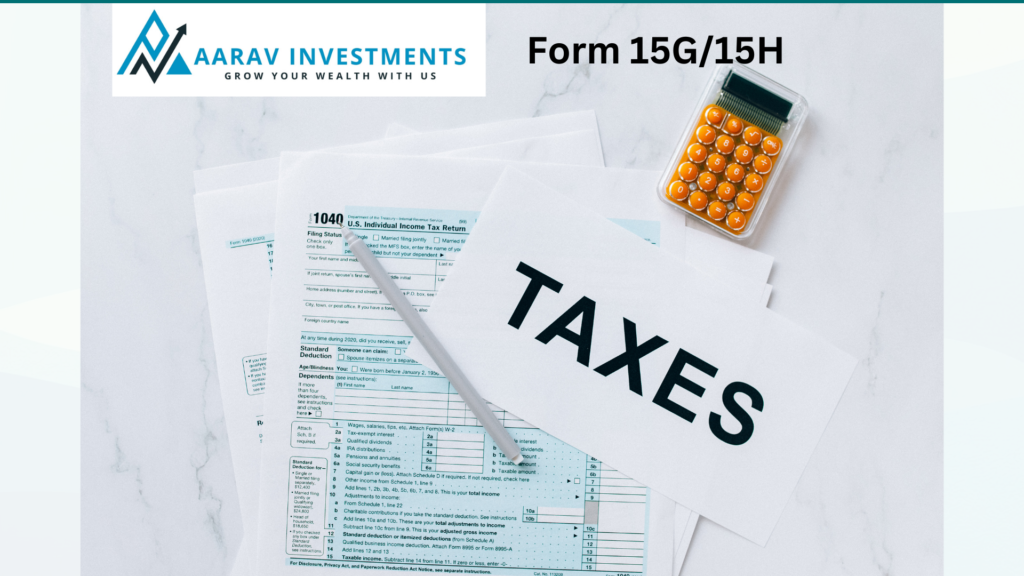
Understanding Form 15G and Form 15H: A Comprehensive Guide
In the realm of taxation in India, there are several forms and documents that individuals need to be familiar with to comply with the regulatory requirements. Two such forms are Form 15G and Form 15H, which are used to declare that an individual’s income is below the taxable limit and hence, not subject to TDS (Tax Deducted at Source). In this article, we will delve into the details of these forms, their purpose, eligibility criteria, and the process of submitting them.
Form 15G and Form 15H are valid for one financial year. So, please submit these forms every year at the beginning of the financial year. This will ensure that the bank does not deduct any TDS on your interest income.
Form 15G and Form 15H: An Overview:
Form 15G and Form 15H serve the same purpose but cater to different categories of taxpayers. They are primarily meant to prevent the deduction of tax at source on certain types of income for individuals who are not liable to pay taxes on their total income. The forms act as self-declaration forms to be submitted to the payer (bank, financial institution, or any other entity responsible for making the payment).
Form 15G is applicable to individuals below the age of 60 years, Hindu Undivided Families (HUFs), trusts, or any other non-corporate entities. On the other hand, Form 15H is specifically designed for senior citizens (individuals aged 60 years or above). By submitting these forms, eligible individuals can prevent tax deduction at source on their interest income, dividends, or other income sources, subject to specific conditions.
Eligibility Criteria:
To avail the benefits of Form 15G or Form 15H, individuals must meet certain eligibility criteria, including:
Form 15G: a. The individual should be a resident Indian. b. The individual’s age must be below 60 years (in the case of individuals and HUFs). c. The total estimated income for the financial year should be below the taxable threshold.
Form 15H: a. The individual should be a resident Indian. b. The individual’s age must be 60 years or above during the financial year. c. The estimated tax liability for the financial year should be nil.
It is important to note that these forms need to be submitted separately for each financial year and for each payer, depending on the income received from them.
Submission Process:
The process of submitting Form 15G or Form 15H is relatively straightforward. Here are the steps to follow:
Obtain the relevant form: Form 15G and Form 15H are readily available on the websites of banks, financial institutions, or can be obtained from income tax offices.
Fill in the necessary details: Carefully fill in the required details such as name, address, PAN (Permanent Account Number), previous assessment year, estimated income, etc.
Attach supporting documents: In some cases, supporting documents such as a photocopy of PAN card or identification proof may be required. Ensure that these documents are attached as per the instructions mentioned in the form.
Submit the form: Once the form is duly filled and signed, submit it to the respective payer or deductor responsible for deducting tax at source.
Retain a copy: It is advisable to keep a copy of the submitted form for future reference.
Conclusion:
Form 15G and Form 15H provide individuals an opportunity to avoid TDS on their income if they fall within the prescribed eligibility criteria. These forms play a crucial role in reducing the administrative burden on taxpayers who are not liable to pay taxes on their total income. However, it is important to ensure that the information provided in these forms is accurate and in compliance with the income tax regulations. It is recommended to seek professional advice or consult the income tax department